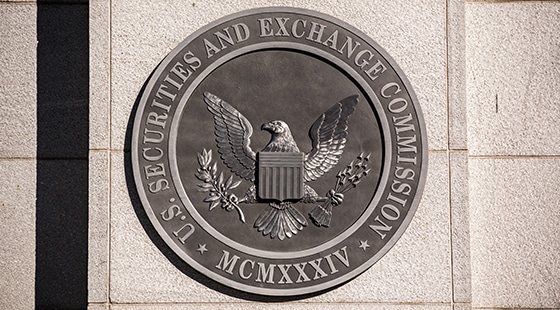Navigating the SEC's Final Rule on Cybersecurity: Implications and Opportunities for Businesses

The world of finance and cybersecurity has entered a new chapter with the U.S. Securities and Exchange Commission’s (SEC) recent final rule on cybersecurity disclosure. Effective September 5, 2023, this new regulation requires public companies to enhance transparency around cybersecurity risks and incidents. In this article, we will delve into the details of the final rule, discuss its impact on registrants, and explore how companies can turn this regulatory requirement into a strategic advantage.
Understanding the SEC’s Cybersecurity Final Rule
The SEC’s final rule mandates that public companies must disclose material cybersecurity incidents on Form 8-K or Form 6-K, depending on their size and type. This move aims to standardize how companies report these incidents and to inform investors of potential risks to their investments.
Here’s what you need to know:
- Effective Date: The new Item 1.05 of Form 8-K comes into effect on December 18, 2023, for most registrants, while smaller reporting companies have an additional 180 days to comply.
- Scope of Disclosure: Companies must report material cybersecurity incidents, which are defined as unauthorized events that jeopardize the confidentiality, integrity, or availability of their information systems or data.
- Reporting Timeline: An Item 1.05 Form 8-K must be filed within four business days after the company deems an incident material, although this can be delayed if immediate disclosure is considered a substantial risk to national security or public safety.
- Exemptions: Smaller reporting companies and asset-backed issuers have certain exemptions or extended timelines for compliance.
The Strategic Dimension of Cybersecurity Disclosure
While the primary objective of the final rule is to protect investors, companies can leverage this requirement as an opportunity to strengthen their cybersecurity posture and market reputation. Investing in comprehensive cybersecurity programs can not only reduce the risk of future incidents but also potentially improve a company’s attractiveness to investors and customers.
1. Prioritize Cybersecurity Governance
Good governance is the cornerstone of effective cybersecurity management. By establishing a clear committee structure, involving the board of directors, and creating documented processes for risk oversight, companies can not only comply with SEC requirements but also demonstrate to stakeholders that they are proactively managing cybersecurity risks.
2. Develop a Robust Incident Response Plan (IRP)
A written IRP is no longer just best practice; it’s a necessity. Companies need to outline their strategies for incident detection, response, recovery, and communication. Such preparedness can minimize the impact of a cybersecurity event and also ensure regulatory compliance.
3. Engage in Regular Risk Assessments
Conducting and documenting comprehensive risk assessments allows companies to identify vulnerabilities and implement appropriate controls. This proactive approach can reduce the likelihood and impact of cyber incidents, aligning with the SEC’s vision of enhanced investor protection.
4. Implement an Effective Third-Party Risk Management (TPRM) Program
As businesses increasingly rely on third-party vendors, the risk of cybersecurity breaches through these partnerships escalates. A TPRM program can help manage these risks by establishing protocols for vendor selection, monitoring, and compliance with the company’s cybersecurity standards.
5. Conduct Tabletop Exercises
Simulating a cyber attack through tabletop exercises can validate the effectiveness of the IRP and the readiness of the response team. It also fulfills the SEC’s requirement for registrants to disclose their processes for identifying and managing cybersecurity risks.
6. Optimize Cybersecurity Investment
By prioritizing investments in cybersecurity infrastructure and processes, companies not only comply with the new rules but also potentially reduce costs associated with breaches, such as legal fees, fines, and reputational damage.
7. Foster Transparency and Communication
Transparent reporting and communication about cybersecurity preparedness can enhance investor confidence. Companies that clearly articulate their cybersecurity risk management strategies can differentiate themselves as more secure investments.
Cybersecurity Disclosure: Beyond Compliance
The final rule isn’t just a compliance checklist—it’s a strategic business decision. Here are some actions companies can take to turn this SEC requirement into an opportunity:
Assess Your Cybersecurity Maturity
Evaluate your current cybersecurity measures against the SEC’s expectations. Consider conducting an independent audit to identify any gaps and develop a plan to address them.
Invest in Cybersecurity Talent and Training
Having knowledgeable personnel, such as a Virtual Chief Information Security Officer (vCISO), is crucial. Continuous employee training ensures that your team can prevent and respond to cyber threats effectively.
Strengthen Your Cybersecurity Infrastructure
Invest in technologies that bolster your cyber defenses. Consider implementing solutions for intrusion detection, vulnerability management, and incident response.
Embrace Cybersecurity as Part of Corporate Culture
Encourage a culture of security awareness throughout your organization. When every employee understands the importance of cybersecurity, you create a more resilient environment.
Communicate Proactively with Stakeholders
Develop a communication plan that keeps investors informed about your cybersecurity efforts. Regular updates can foster trust and demonstrate your commitment to protecting stakeholder interests.
Enhance Market Competitiveness
By strengthening your cybersecurity posture, you not only comply with SEC regulations but also position your company as a safer bet for investors and customers alike.
The Bigger Picture: A Secure Ecosystem
The SEC’s final rule on cybersecurity may have been born out of the necessity to protect investors, but its implications are much wider. As companies enhance their cybersecurity measures, they contribute to a more secure digital ecosystem, reducing the overall costs and negative impacts of cyber attacks on society.
Conclusion
The SEC’s cybersecurity disclosure requirements represent a significant shift in the regulatory landscape. By understanding the rule’s provisions and embracing the strategic value of robust cybersecurity practices, companies can not only comply with the new mandates but also strengthen their market position, investor confidence, and overall security posture. It’s a challenging but opportune time for businesses to align their cybersecurity strategies with their corporate governance and risk management objectives, ensuring a resilient future in an increasingly digital world.
For SEC-regulated businesses navigating the complexities of the new cybersecurity disclosure rule, SideChannel stands out as a comprehensive ally. With a suite of tailored offerings that align perfectly with the SEC’s requirements, SideChannel provides an invaluable partnership for companies seeking not just compliance, but also excellence in their cybersecurity posture. Their services include a meticulously crafted Incident Response Plan (IRP), strategic tabletop exercises to stress-test your security measures, a Breach Assessment and Reporting Service (BARS), and an in-depth Third-Party Risk Management (TPRM) program. SideChannel also brings to the table an 18-month strategic roadmap, control gap analysis, and asset inventory management, all underpinned by the guidance of an expert Virtual Chief Information Security Officer (vCISO). With SideChannel’s capabilities, SEC-covered businesses are empowered to turn regulatory compliance into a strategic advantage, ensuring they are well-prepared, resilient, and transparent in their cybersecurity operations.


